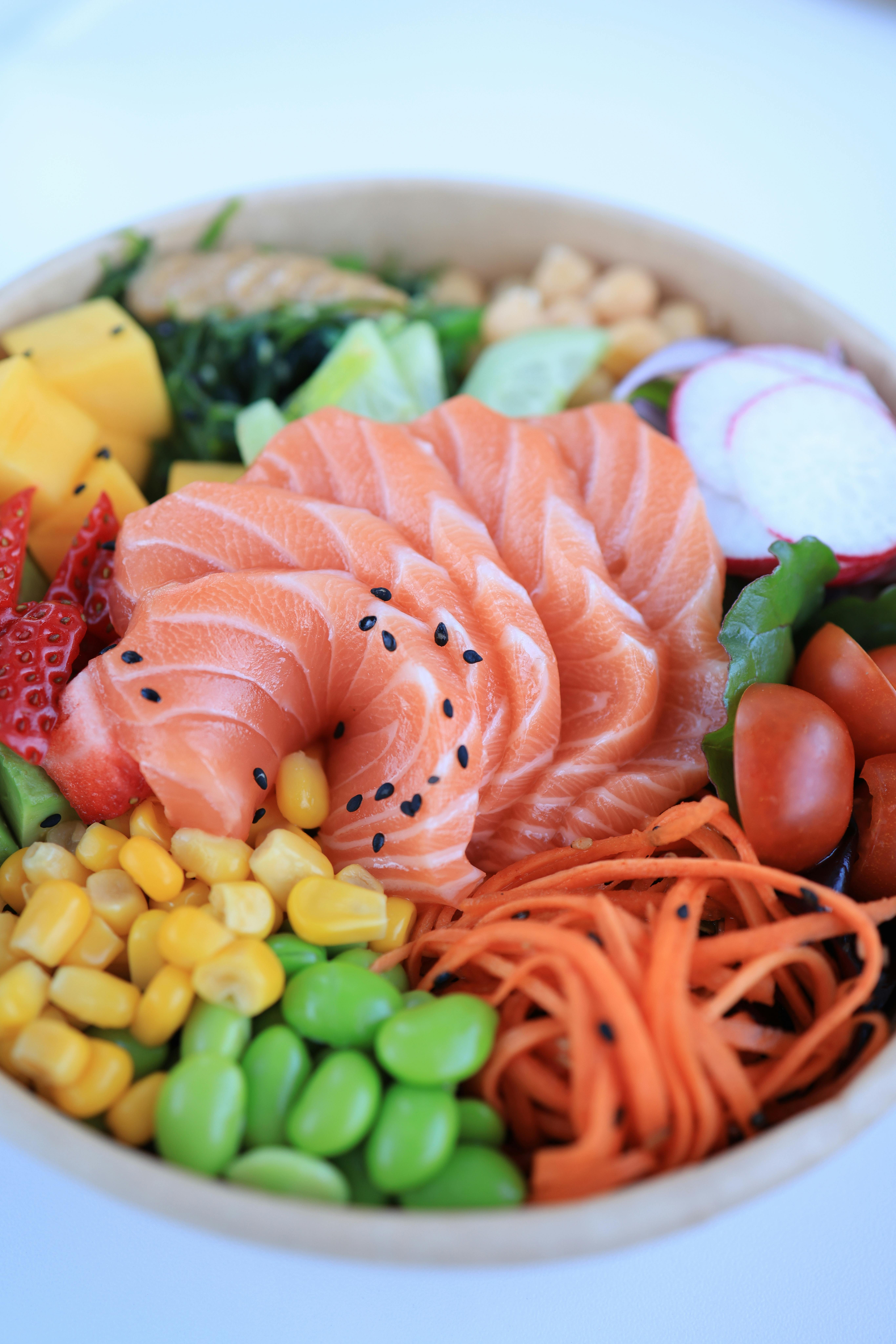
Top 5 Healthy Carbs in Jicama: Discover Nutrition Benefits for 2025
Jicama, a root vegetable native to Mexico, has garnered attention for its impressive nutritional profile and numerous health benefits. Known for its crunchy texture and mildly sweet taste, jicama carbs provide a low-calorie, fibrous option for those looking to incorporate more vegetables into their diet. As we approach 2025, understanding the nutrition of jicama becomes increasingly crucial for making healthy dietary choices.
The benefits of jicama extend far beyond its taste. High in dietary fiber, low in calories, and packed with vitamins and minerals, jicama is an excellent addition for anyone aiming for weight management or improved overall health. This article explores the top five healthy carbs in jicama, the nutrition behind this versatile vegetable, and unique ways to include it in your diet.
With an emphasis on practical applications, we'll delve into the various jicama recipes, health benefits, and comparisons to other common vegetables like potatoes. Whether you're a seasoned chef or just beginning your health journey, this guide will equip you with everything you need to enjoy jicama—raw or cooked. Let's discover how jicama can transform your meals in 2025.
Understanding Jicama Carbs for a Balanced Diet
Building on our introduction, understanding jicama carbs is essential for anyone seeking to maintain a balanced diet. With its low calorie and high fiber content, jicama serves as an excellent alternative to traditional carbohydrate sources.
The Nutritional Value of Jicama
Jicama is low in calories, with around 38 calories per 100 grams, making it one of the best options for those watching their caloric intake. It contains approximately 9 grams of carbohydrates, primarily coming from dietary fiber. This fiber not only aids digestion but also helps to create a feeling of fullness, supporting weight loss efforts. When compared to foods like potatoes, which contain higher carb counts, jicama emerges as a superior low-carb jicama choice for many people.
Key Vitamins and Minerals in Jicama
Jicama is rich in essential vitamins and minerals including vitamin C, vitamin B6, potassium, and iron. Vitamin C supports immune health, while potassium is vital for heart function and regulating blood pressure. Additionally, jicama's vitamins contribute to reducing inflammation, offering a holistic value to those who include it in their meals.
Jicama's Fiber Content: A Digestive Powerhouse
One of the standout features of jicama is its fiber content, boasting about 4.9 grams of fiber per 100 grams. This dietary fiber aids in promoting regular digestion and can help control blood sugar levels, making jicama a go-to food for diabetics. Incorporating jicama into your meals can act as a natural remedy for digestive issues and contribute to overall gut health.
Jicama in Caloric Comparisons
When considering food options, the caloric differences are striking. While a regular serving of potatoes may provide upwards of 150 calories, jicama offers a fraction of that, demonstrating its potential for weight management. Substituting jicama in your meals can lead to significant caloric savings without sacrificing flavor.
Why Eat Jicama? The Health Benefits
The question "Is jicama good for you?" is answered positively when exploring its numerous health benefits. From enhancing digestion to boosting your immune system, jicama undoubtedly deserves a spot in your kitchen. Furthermore, jicama can be a great snack option for kids, providing a nutritious alternative to processed snacks.
Low-Carb Jicama Recipes to Try
With these fundamentals established, let's explore how to prepare and enjoy this versatile vegetable. There are countless ways to incorporate jicama into your meals, whether you prefer it raw or cooked.
Refreshing Jicama Salad Recipe
A Jicama salad makes for a refreshing and healthy meal. Combine jicama with fresh lime juice, cilantro, diced bell peppers, and avocado for a colorful, nutrient-packed dish. This salad is not only low in calories but also high in flavor, making it ideal for summer gatherings.
Jicama as a Crunchy Snack
For a quick snack, consider slicing jicama into sticks and pairing them with your favorite dip, like hummus or guacamole. This replacement for traditional chips is an excellent way to enjoy a low-carb jicama treat without sacrificing your health goals.
Jicama Stir Fry: A Unique Twist
Taking this concept further, jicama can also shine in a stir fry. Cut jicama into thin strips and toss them with your favorite vegetables and protein for a crunchy, nutrient-dense meal. It holds up well in heat, offering a delightful texture that distinguishes it from softer vegetables.
Cooking and Preparation Methods for Jicama
Jicama can be enjoyed in numerous ways, but preparation methods can significantly impact its health benefits. Whether you opt for raw, pickled, or sautéed, jicama retains essential nutrients. However, be mindful to use minimal oil and seasonings to maximize its health qualities.
Seasoning Jicama for Flavor Enhancement
Jicama possesses a mild flavor, allowing it to pair well with various seasonings. Experimenting with different herbs and spices can elevate your dishes significantly. For example, tossing raw jicama in chili powder or cumin can create an exciting twist.
Health Benefits of Jicama for Weight Loss
Connected to this principle of preparation, let's delve into the specific ways that jicama can support weight loss efforts. Its low calorie count coupled with high fiber content makes jicama a staple for anyone aiming to shed pounds.
Jicama for Satiety and Portion Control
Because jicama has a high water content, it helps in promoting feelings of fullness, which can reduce overall calorie consumption. Including jicama in meals as a low-calorie filler can significantly aid in weight management without the guilt of excessive calories.
Jicama in a Low Carb Diet
Adopting a low-carb jicama approach allows you to enjoy flavorful dishes without the carbs typically found in starchy vegetables. Jicama can take the place of potatoes in various recipes, leading to healthier meal options.
Improving Blood Sugar with Jicama
Jicama's fiber content plays a crucial role in stabilizing blood sugar levels. For those with diabetes or those monitoring their blood sugar closely, jicama serves as an excellent food choice. Its low glycemic index equips it to be a part of a healthy diet.
Easy Substitutes Using Jicama
Looking for jicama substitutes in your cooking? Jicama can effectively replace ingredients like potatoes in chips, fries, or salads, providing a healthier option while maintaining a familiar taste and crunch.
Jicama Vitamins and Minerals: A Closer Look
Incorporating jicama into your meals not only introduces fiber but also vital vitamins and minerals that contribute to overall health. From immune support to cardiovascular benefits, jicama brings a wealth of nutritional goodness to your plate.
Conclusion: Embracing Jicama in 2025
In conclusion, jicama is undoubtedly a versatile and healthy addition to any diet. Its low-calorie content, high fiber presence, and abundant vitamins make it an ideal choice for those seeking weight loss and overall health improvements. From refreshing salads to satisfying snacks, jicama offers a variety of culinary possibilities.
As we head into 2025, embracing jicama in our diets can promote healthier eating patterns and contribute positively to our well-being. Make sure to explore different jicama recipes and cooking methods to fully enjoy this unique vegetable's benefits.

Whether you're enjoying jicama raw or incorporating it into more elaborate dishes, the possibilities are truly endless. Embrace jicama today for a tasty and nutritious journey towards better health.
